When Tom and Connie Duckworth bought their Gothic Revival-style home in Lake Forest, they knew that it would be a work in progress.
Originally built in the late 1920s as an art gallery for a manor house that had since been torn down, the space had been added to over the years, which doubled its size.
The Duckworths demolished those additions, leaving the original structure, which had just three rooms: a grand 20-by-50-foot living room, a dining room and a second floor artist’s studio, which the growing family shared as a bedroom while Tom planned a new addition. “We started with three of us living in one room, and by the time we finished, there were six of us,” Tom says.
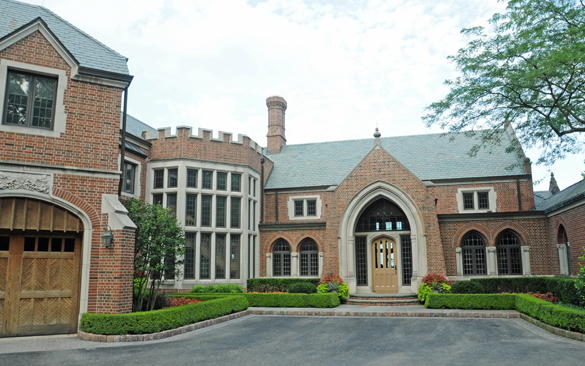
The entire front of the home is an addition. “It really took Tom’s eye, imagination and painstaking care to understand that you could make this into the home it is today,” Connie says.
During those early days, the house functioned quite differently for the Duckworths and their four children than it does today. Melamine storage cabinets lined one wall in the living room, and the other side was full of exercise equipment, which often held coats. “We used the dining room as a playroom, and we had a TV in the fireplace,” Connie recalls. “Those days, when the kids were young and we were literally camping in one room, were really fun. It was, in some ways, carefree living.”
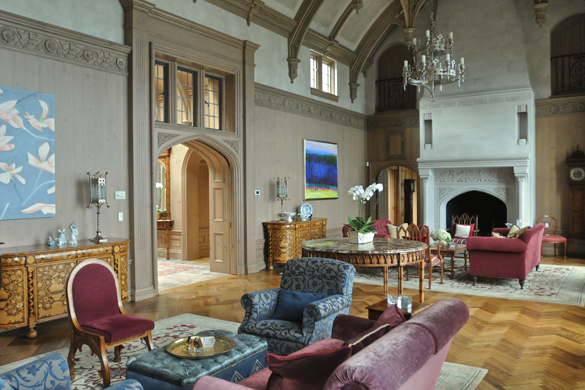
The ceiling in the living room originally had no moldings. After much research, Tom had them handcrafted in England to match the original wall paneling. “The paneling and flooring in this room are original up to about 12 ft. high,” Tom explains. “We’ve added everything above that, including all the carving and ceiling beams.”
Tom reckoned that it would take time and much research to create a seamless addition that respected the home’s history and architecture. “It probably took 10 years to complete the interior,” he says. “If I don’t know exactly what I want to do or how I want to do it, I wait until I figure it out.” Indeed, Tom estimates that it took him nearly two years to determine the best way to panel the dining room. Ultimately, he had the paneling, along with ceiling moldings, furnishings, chandeliers and light fixtures, designed and manufactured in England.

“In the early days of paneled rooms in England, the paneling would be installed in a mud-walled or other crude exterior structure,” Tom explains. “The paneling was held together with wooden plugs, so that it could be taken apart and moved.” After extensive research, Tom hired British lighting designer, Kevin McCloud, to design many historically accurate chandeliers and light fixtures for the home.
Walking through the home, it’s nearly impossible to discern the addition from the original structure. Although they have more than doubled the size of their home, the Duckworths say that it almost never feels empty. “There’s almost always somebody sleeping in the guest room,” Connie says, noting that she has an open-door policy for family friends and enjoys cooking for the whole brood. “We love having a full house.”
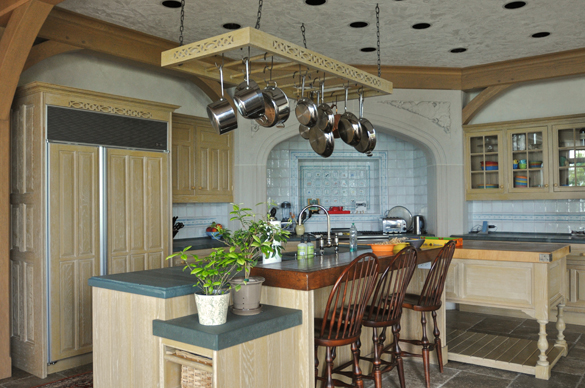
Design With Purpose
The Duckworth home is filled with stunning Afghan rugs made by Arzu Studio Hope, the organization that Connie founded in 2004 after visiting the war-torn country and witnessing for herself the poor living conditions of Afghan women and children.
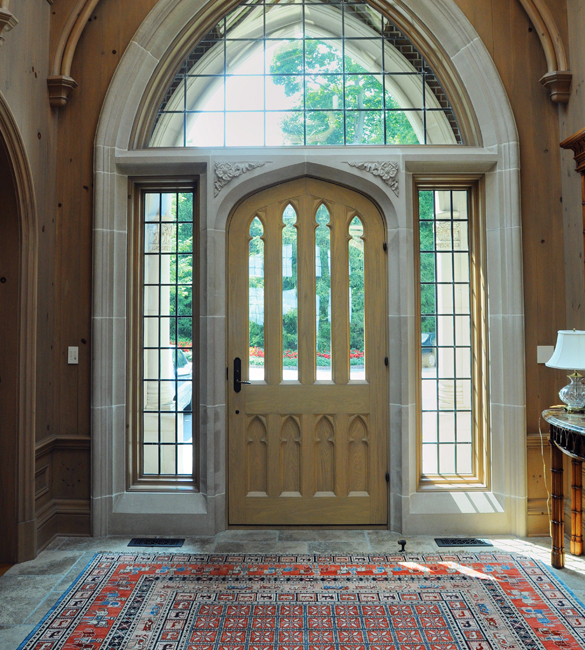
The organization provides not only employment and a market for their hand-woven rugs but also education, maternal health and an array of community programs. “We operate in Bamyan province, a very barren, remote area with very little economic activity,” Duckworth explains. “Arzu Studio Hope has made a significant difference.”
The nonprofit organization has partnered with designers such as Frank Gehry, Michael Graves, Zaha Hadid, Robert A.M. Stern, Margaret McCurry and Stanley Tigerman, who have created a wide array of patterns, which are then hand-woven by Afghan women in their own homes.
“Here is global iconic architecture married with the poorest, most vulnerable group of women in the world, and it’s the artistry bridging these two worlds,” Duckworth says. Arzu Studio Hope rugs are available direct from ARZU and from Minasian Rug Company in Evanston.
More photos from the home:
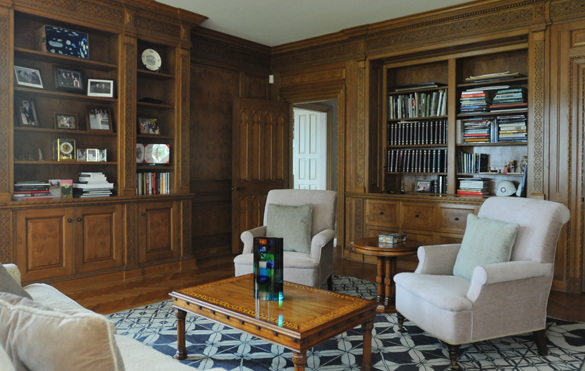
In the library, a rug from Arzu Studio Hope brings together a contemporary pattern designed by Stanley Tigerman and made with traditional Afghan weaving methods.

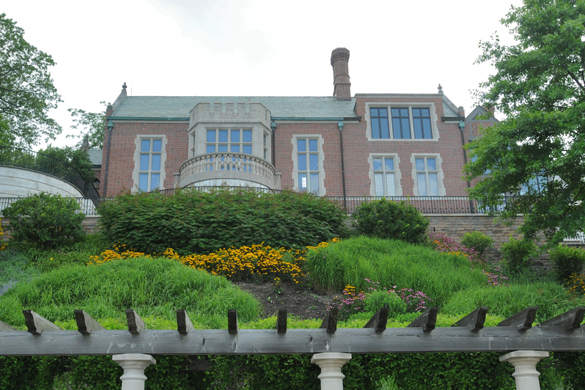
The bluff was falling down when the Duckworths first purchased the property. Over the years, they have had it rebuilt and landscaped.


